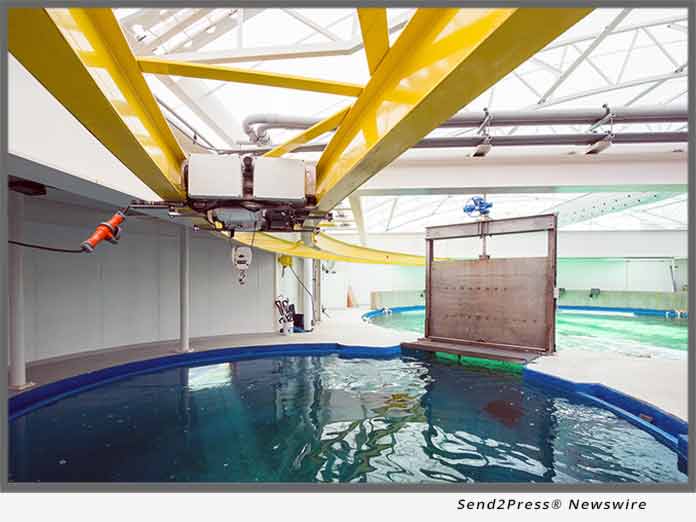Have you ever visited an aquarium and wondered how the animals found their way in there? Engineers at Air Technical Industries (ATI) learned first-hand by designing a creative solution for the Wildlife Conservation Society (WCS) in New York City: the first continuous, double-rail, serpentine crane system of its kind.

(MENTOR, Ohio) — NEWS: Have you ever visited an aquarium and wondered how the animals found their way in there? Engineers at Air Technical Industries (ATI) learned first-hand by designing a creative solution for the Wildlife Conservation Society (WCS) in New York City: the first continuous, double-rail, serpentine crane system of its kind.
ATI thrives on customized designs, with a 50-year history built on tackling the projects that others have called “impossible.” They pride themselves on their “Challenge Request” form on their website, which was how WCS found them.
WCS needed a magical system of continuous motion to gently move sharks weighing up to 600 pounds from one pool to another, as well as from outdoors to inside the pools in the building without compromising the sensitive indoor environment.
In addition to the unique requirements of the space, the business of moving sharks called for very special adjustments. The motion of the crane had to be smooth to keep the animals calm, not jerky or loud-like traditional models. The trolley needed to move at a continuous, but slow pace so the caretakers could walk alongside the moving sharks. The hoist had to lower carefully and smoothly into the pools without splashing down and the materials used could not interfere with the pH of the water or oxygen levels.
Due to the staggered pools, the path of the track had to pass over each pool in an offset formation, as well as miss the gates located between pools.
ATI’s solution arrived as an S-shaped double-girder bridge crane track with a zero-headroom hoist and trolley system. The hoist was built directly into the trolley, saving headspace with only the hook hanging below.
Due to the sensitive nature of the environment, special considerations were necessary to prevent contamination of the aquarium pools including: a special food-grade epoxy coating, wash-down motor, and stainless steel lifting chain and hook, as well as non-toxic and environmentally friendly lubricants.
“The trolley travel was probably the biggest challenge in the whole project,” explained Vida Novak, Lead Engineer at ATI. “After making several adjustments to the trolley, we converted it to ‘four-wheel drive,’ enabling all the rollers to navigate the curves in the track smoothly and effortlessly.”
The months of creative collaboration resulted in the first ever double-girder, ceiling mounted, serpentine crane system that perfectly fit the needs of the aquarium.
It was time for the first live shark to go for a test ride on the Shark Crane. Search, “How Do You Move a Shark” for the New York Times May 16, 2018 article. It worked! People and sharks alike sighed in relief. The Shark Crane was perfectly designed for its unique space.
The Shark Crane is used regularly at the New York Aquarium. Customizing the Shark Crane for such a specific environment was certainly an enormous challenge, but the engineers at ATI know that anything is possible!
ABOUT ATI
Founded in 1964, Air Technical Industries is a manufacturer of a broad line of standard and custom material handling equipment. The company specializes in providing innovative, engineered solutions that meet the specific needs of their customers. Learn more at: http://www.airtechnical.com/.
Download the full case study at (PDF): http://www.airtechnical.com/PDF/ATI-shark-crane.pdf
Related link: http://www.airtechnical.com/
This version of news story was published on and is Copr. © eNewsChannels™ (eNewsChannels.com) – part of the Neotrope® News Network, USA – all rights reserved. Information is believed accurate but is not guaranteed. For questions about the above news, contact the company/org/person noted in the text and NOT this website.



